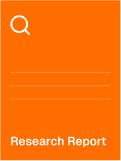
Europe Continuous Glucose Monitoring - Market Share Analysis, Industry Trends & Statistics, Growth Forecasts (2025 - 2030)
Description
Europe Continuous Glucose Monitoring Market Analysis
The Europe continuous glucose monitoring market size is valued at USD 3,099.62 million in 2025 and is forecast to reach USD 6,328.31 million by 2030, advancing at a 15.34% CAGR. The expansion reflects Europe-wide reimbursement reforms, accelerating telehealth integration, and the EU-MDR rule set that harmonizes device approvals. Germany, France, and the United Kingdom remain the anchor demand centers as statutory insurers broaden coverage across Type 1 and insulin-treated Type 2 diabetes. Manufacturing localization—most notably Dexcom’s EUR 300 million Irish plant and Abbott’s enlarged Dublin hub—reduces import exposure and positions the region as a sensor production base. Competitive intensity is moderate: Abbott, Dexcom, and Medtronic still control close to 70% of revenue, yet Senseonics and i-SENS secure fresh CE Marks that introduce longer-wear and lower-cost options.
Europe Continuous Glucose Monitoring Market Trends and Insights
Rising Diabetes Prevalence in Europe
Europe's continuous glucose monitoring market momentum is anchored by 65.6 million adults currently living with diabetes, a figure projected to climb to 72.4 million by 2050. Younger onset of Type 2 diabetes in Eastern Europe widens the addressable patient pool beyond the historical Type 1 focus. German cohort studies show HbA1c improvements to 7.13% among CGM users versus 7.66% for non-users, strengthening physician confidence. Endocrinologists increasingly prescribe CGM at diagnosis rather than after finger-stick failure, embedding the technology as first-line management. This epidemiological tailwind sustains the Europe continuous glucose monitoring market even during economic slowdowns.
Expansion of Reimbursement for CGM Devices
Statutory coverage in Germany since 2016, France’s broadened Assurance Maladie listing in 2024, and NHS England’s FreeStyle Libre program collectively remove upfront cost barriers. Reimbursed users scan glucose 16.3 times per day compared with 4–6 finger-stick tests. Predictable payouts foster manufacturer pipeline investment and scale production. Italy and Spain mirror the policy path through regional tenders, creating a domino effect across Southern Europe. The reimbursement wave underpins double-digit revenue visibility for the Europe continuous glucose monitoring market through 2030.
High Device Cost and Partial Reimbursement Gaps
Income disparities across Eastern Europe keep patient co-pays high. Some Italian southern regions still reimburse only 70% of sensor cost, stalling uptake. Local advocacy groups lobby for full coverage, but budget constraints prolong negotiations. Manufacturers deploy patient-assistance vouchers yet struggle to close affordability gaps quickly. These pockets temper volume growth within the Europe continuous glucose monitoring market until broader funding parity is secured.
Other drivers and restraints analyzed in the detailed report include:
- Advances in User-Friendly Wearable Sensors
- Telehealth-Driven Demand for Remote Monitoring
- Sensor Accuracy and Calibration Concerns
For complete list of drivers and restraints, kindly check the Table Of Contents.
Segment Analysis
Sensors accounted for 82.21% of 2024 revenue within the Europe continuous glucose monitoring market, reflecting their consumable nature and 14-day replacement cycles. Segment growth is forecast at a 15.68% CAGR through 2030 as extended-wear versions such as Senseonics’ 6-month Eversense E3, approved in 2024, gain traction. Automated Irish production lines from Dexcom and Abbott are expected to lift annual capacity to 100 million units by 2027, pushing unit cost below EUR 30 and spurring use in lower-income regions. Receivers and transmitters held 17.79% share but shift toward smartphone apps is gradually eroding dedicated hardware sales. Software subscriptions that interpret CGM data emerge as a fresh margin pool, diversifying revenue beyond physical sensors. Interoperability standards embedded in the EU-MDR encourage app-centered ecosystems and third-party analytics, a trend that deepens platform lock-in for the Europe continuous glucose monitoring market.
The Europe Continuous Glucose Monitoring Market Report is Segmented by Component (Sensors, Transmitters, Receivers), End User (Hospitals/Clinics, Home/Personal), Demography (Adult, Paediatric), and Geography (Germany, United Kingdom, France, Italy, Spain, Russia, Rest of Europe). The Market Forecasts are Provided in Terms of Value (USD).
List of Companies Covered in this Report:
- Abbott Laboratories
- Medtronic
- Dexcom
- Senseonics
- Roche
- A. Menarini Diagnostics S.r.l.
- I-Sens
- Medtrum Technologies Inc.
- Nemaura Medical Inc.
- Zhejiang POCTech Co.,Ltd.
- MicroTech Medical
Additional Benefits:
- The market estimate (ME) sheet in Excel format
- 3 months of analyst support
Table of Contents
- 1 Introduction
- 1.1 Study Assumptions & Market Definition
- 1.2 Scope of the Study
- 2 Research Methodology
- 3 Executive Summary
- 4 Market Landscape
- 4.1 Market Overview
- 4.2 Market Drivers
- 4.2.1 Rising Diabetes Prevalence in Europe
- 4.2.2 Expansion of Reimbursement For CGM Devices
- 4.2.3 Advances in User-Friendly Wearable Sensors
- 4.2.4 Telehealth-Driven Demand for Remote Monitoring
- 4.2.5 National EHR Integration of CGM Data
- 4.2.6 Manufacturing Automation Lowering Sensor Cost
- 4.3 Market Restraints
- 4.3.1 High Device Cost and Partial Reimbursement Gaps
- 4.3.2 Sensor Accuracy / Calibration Concerns
- 4.3.3 GLP-1 Drugs Curbing Monitoring Frequency
- 4.3.4 EU-MDR Uncertainty for Next-Gen Non-Invasive CGM
- 4.4 Supply Chain Analysis
- 4.5 Regulatory Landscape
- 4.6 Technological Outlook
- 4.7 Porter's Five Forces Analysis
- 4.7.1 Bargaining Power of Suppliers
- 4.7.2 Bargaining Power of Consumers
- 4.7.3 Threat of New Entrants
- 4.7.4 Threat of Substitute Products and Services
- 4.7.5 Intensity of Competitive Rivalry
- 4.8 Market Indicators
- 4.8.1 Type-1 Diabetes Population
- 4.8.2 Type-2 Diabetes Population
- 5 Market Size & Growth Forecasts (Value)
- 5.1 By Component
- 5.1.1 Sensors
- 5.1.2 Transmitters
- 5.1.3 Receivers
- 5.2 By End User
- 5.2.1 Hospitals / Clinics
- 5.2.2 Home / Personal
- 5.3 By Demography
- 5.3.1 Adult
- 5.3.2 Paediatric
- 5.4 By Geography
- 5.4.1 Germany
- 5.4.2 United Kingdom
- 5.4.3 France
- 5.4.4 Italy
- 5.4.5 Spain
- 5.4.6 Russia
- 5.4.7 Rest of Europe
- 6 Competitive Landscape
- 6.1 Market Concentration
- 6.2 Market Share Analysis
- 6.3 Company Profiles (includes Global level Overview, Market level overview, Core Segments, Financials as available, Strategic Information, Market Rank/Share for key companies, Products & Services, and Recent Developments)
- 6.3.1 Abbott Laboratories
- 6.3.2 Medtronic plc
- 6.3.3 Dexcom Inc.
- 6.3.4 Senseonics Holdings Inc.
- 6.3.5 F. Hoffmann-La Roche Ltd
- 6.3.6 A. Menarini Diagnostics S.r.l.
- 6.3.7 i-SENS, Inc.
- 6.3.8 Medtrum Technologies Inc.
- 6.3.9 Nemaura Medical Inc.
- 6.3.10 Zhejiang POCTech Co.,Ltd.
- 6.3.11 MicroTech Medical
- 7 Market Opportunities & Future Outlook
- 7.1 White-space & Unmet-need Assessment
Pricing
Currency Rates

